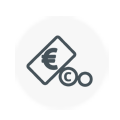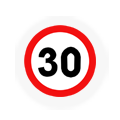Total Card Information
From 12/03, Total has decided to deactivate the payment of its card on the toll with barrier. Please bring another means of payment and to make it easier for you to pass through the toll terminals, equip yourself now with a toll tag from Bip & Go whether you are a professional or an individual.
Liber-t toll tag, bank cards, cash: whatever means of payment you prefer, we ensure that you can pay simply and safely at the toll gate.
When driving through France, you’re likely to come across Sanef’s extensive system of motorways and highways, called “autoroutes.” These autoroutes connect various regions throughout the country and make it easier to reach cities by providing direct, high-speed passageways for quicker and more efficient travels.
Since our autoroutes are privately owned and operated, drivers pay for each use at desginated toll booths referred to as “péages.” The fees collected at these pay points are used primarily for maintenance, to make sure that our roads stay clean, smooth and safe for drivers.
Note that these tolls apply to every vehicle using the autoroute, including foreign cars and rentals, without exception.
If this is your first time driving on French autoroutes, read on to learn more about how to use the toll booths, what payments are accepted and how to navigate the system so you can avoid experiencing any problems.
How do I approach and use a toll booth (“péage”)?
- Recognizing the toll booth: It’s hard to miss most péages. Not only do they stretch all the way across the road, often with cars stopped at each lane, but they are also clearly indicated by signs before you reach them. For example, you may see a blue sign with the words “Péage,1000 m” to signal that there is a toll booth coming up in the next 1000 meters.
- Choose your toll lane: Depending on the size of the road and amount of traffic, there could be anywhere from 4 to over 20 toll lanes to choose from. Each lane has a sign above it to indicate its status (open or closed) and the payment method accepted in that lane (see below for sign guide and payment options). Note that the “t” lanes are reserved only for drivers with the ‘toll tag” pay-and-go subscription.
Once you find an open lane that accepts your method of payment, approach that lane and patiently wait your turn. - Take a Ticket or Pay the Fee: When it’s your turn at the booth, simply stay inside of your car and roll down your driver-side window to access the machine or the occasional booth operator.
At some péages you pay a fixed rate fee: The rate will be indicated on the machine. If paying by euro cash, insert coins in the coin slot (piéces) and bills in the bill slot (billets). Any change will be returned in the “monnaie” cup. If paying by card, you can insert your card in the slot titled “carte” or use the contactless method if you see the sans contact symbol.
At some toll booths, drivers take a ticket instead. You must keep this ticket until you leave the autoroute, as you will pay your fee upon exiting. Once you come across your exit point, you will need to insert your ticket into the ticket slot to see and pay your rate, which is calculated according to how far you’ve driven.
If you need assistance, there will always be a help button or phone to call for support. Do not try to back your vehicle up. - Continue on your way: Once your transaction is complete, the barrier will raise and you can continue driving.
What types of payment methods are accepted at toll booths?
From Liber-t toll tags to bank cards or cash: whatever means of payment you prefer, we ensure that you can pay simply and safely at the toll gate.

Lane closed, do not enter.

Lane open. Accepts all kinds of payment including euro cash and debit or credit cards.

Payment in cash.


Lane for all types of payment and toll tags.

Lane reserved for toll tag payments
(stop & go)


Lane for payment by bank card and toll tag
(stop & go)


Lane reserved for toll tag payment without stopping
(drive through at 30 km/h)
What is the cost of using toll motorways in France?
Toll rates vary depending on the distance you drive and what type of vehicle you’re using. In general, the further you drive and the larger your vehicle is, the more expensive your rate is likely to be.
For category 1 vehicles (most light cars), autoroutes typically charge between €0.10 and €0.20 per kilometer, while very heavy vehicles with more than two axles over 3.5 tonnes are charged from €0.30 to €0.40 per kilometer.
It’s important to plan and calculate your journey ahead of time to make sure you’re prepared to cover toll fares, and it’s always a good idea to keep extra cash or coins in the car just in case.
Want to know how much your motorway trip will cost? Use our toll calculator to plan ahead.
What is the free flow toll and how does it work?
The toll price changes every year, on February 1st, in a manner that is closely controlled by the French State. The calculation mechanism is based on two main principles: inflation and investment work scheduled in agreement with the French State.
Motorway rates are then calculated based on the category of your vehicle and, depending on the case, the distance traveled between your entry and exit on the motorway. These fees allow motorway concession companies to guarantee smooth, safe and clean motorways for drivers and to invest in their modernization.
How to pay your free flow toll fee?
- You can go online to sanef.com to enter your vehicle registration number and manually pay any flux libre fees with a debit or credit card.
- If you want to avoid re-entering your information for multiple trips, create a Sanef customer account at sanef.com so that payments can be processed automatically.
- If you prefer to pay in person, you can visit any of 10,000 payment locations approved by the Nirio network. These are often found in local French tobacco shops called “Tabac.”
If fees are not paid within 72 hours, you will be required to pay of €10 or even €90, so don’t forget!
